Injuries in sport and how to avoid them
Sports injuries are a reality that affects both amateurs and professionals. Regardless of whether you play recreational sports or train at a high level, there is always a risk of injury. Every year, millions of people worldwide suffer sports-related injuries, ranging from simple bruises to serious injuries that require medical treatment.
However, many of these injuries can be avoided through good preparation and appropriate prevention strategies. For parents whose children play sports, it is critical to understand how to minimize these risks to ensure safe sports participation.
This guide examines the most common types of injuries, their causes and modern methods of diagnosis and treatment. We also explain how injuries can be avoided through targeted exercises, thoughtful training planning and appropriate equipment.
The main types of sports injuries
Sports injuries can be divided into different categories depending on the cause and severity.
1. Overuse injuries
These injuries occur gradually due to repetitive strain on a specific part of the body. They often occur in athletes who perform repetitive movements without giving their muscles and joints sufficient recovery time.
- Typical examples :
- Tennis elbow (lateral epicondylitis): inflammation of the tendons of the elbow caused by repetitive movements.
- Achilles tendinitisAchilles tendinitis: pain in the Achilles tendon caused by repetitive strain, especially when running.
- Tennis elbow (lateral epicondylitis): inflammation of the tendons of the elbow caused by repetitive movements.
- SymptomsPersistent pain, inflammation, reduced performance.
2.Blunt injuries (injuries caused by impact)
These injuries occur when an athlete suffers a blow or a fall, which can lead to bruising or fractures.
- Typical examples :
- Ahandball player receives a blow to the leg, resulting in a bruise.
- A rugby player suffers a broken leg after a hard collision.
- Ahandball player receives a blow to the leg, resulting in a bruise.
- SymptomsLocal pain, swelling, visible bruising.
3.Bone fractures and dislocations
Fractures are bone injuries that require immediate medical attention. Dislocations occur when a bone shifts in a joint.
- Typical examples :
- A wrist fracture after a fall while playingbasketball.
- A shoulder dislocation after an unsafe landing in volleyballvolleyball.
- Leg injuries can occur in sports such assoccer orbasketballespecially when changing direction or jumping quickly.
- SymptomsSevere pain, visible deformities, inability to move the affected body part.
4.Sprains and muscle strains
A sprain is a sports injury to the ligaments of a joint caused by a sudden movement or excessive twisting. A strain is an excessive stretching of the muscle fibers.
- Typical examples :
- An ankle sprain after an unsteady landing when playingbadminton.
- A thigh strain caused by a sprint that was too intense without sufficient warm-up.
- SymptomsSharp pain, swelling, limited mobility.
Causes of sports injuries
Sports injuries can be caused by a variety of factors, both due to physical predisposition and external influences. If you understand these causes better, you can prevent sports injuries and stay healthy in the long term. A leg injury caused by an unfortunate fall can affect your entire training for weeks if the injury is not treated properly.
Physiological causes
Some people are naturally more prone to sports injuries due to certain physical conditions:
- Weak ligaments: Some athletes have naturally less stable joints, increasing the risk of sprains and ligament tears. Particularly affected are sports with rapid changes of direction such astennis or handball.
- Muscle imbalances: Uneven muscle development - for example, strong thigh muscles but weak calf muscles - can distribute the load unevenly to certain areas of the body and increase the risk of injury.
Even if these physiological factors cannot always be avoided, the risk can be significantly reduced through targeted training.
External factors
In addition to physical conditions, external factors play a decisive role in the development of sports injuries.
Lack of or insufficient warm-up
Warming up prepares the muscles, joints and circulatory system optimally for the upcoming exertion. If it is neglected or performed too briefly, the likelihood of muscle tension, strains or joint injuries increases considerably.
Technical errors and incorrect movement sequences
Incorrect running technique or unsafe movements can overload certain areas of the body. For example, incorrect posture when lifting weights can lead to serious back injuries. Beginners in particular should make sure they have their technique checked by a trainer.
Unsuitable equipment
Choosing the right equipment has a major impact on injury prevention:
- Incorrect shoes: Running shoes with insufficient cushioning or soles that are too hard can cause knee and foot injuries.
- Lack of protective equipment: In contact sports such asrugby orbasketball the lack of protective pads increases the risk of serious injury
Overtraining and lack of recovery
Recovery is just as important as the training itself. If you don't allow your body to recover sufficiently, you risk muscle fatigue, tendon irritation and long-term damage. Overuse injuries are particularly common in sports such as marathon running or strength training.
How can you avoid these risks?
- Carry out a complete warm-up: Every training session should begin with 10-15 minutes of targeted warm-up to optimally prepare muscles and joints.
- Choose the right equipment: Appropriate shoes and sportswear significantly reduce the risk of injury. For example, special tennis equipment or rugby equipment offer additional protection.
- Increase training gradually: Increasing performance too quickly overstrains muscles and joints. Experts recommend increasing training intensity by no more than 10% per week.
- Pay attention to the body's signals: Pain or unusual fatigue are warning signals that should not be ignored.
With targeted preparation and the right approach, many sports injuries can be effectively avoided.
Diagnosis and treatment of injuries
A quick and precise diagnosis is crucial in order to treat a sports injury correctly and avoid consequential damage. Modern examination methods make it possible to determine the exact type of injury, while immediate initial treatment has a positive influence on the healing process.
Modern diagnostic methods
Doctors use various imaging techniques to determine the severity of an injury:
- MRI (magnetic resonance imaging): Particularly helpful for muscle and ligament injuries, as it visualizes soft tissue damage in detail.
- X-ray: Used to reliably diagnose bone fractures or joint misalignments.
- Ultrasound: Ideal for examining muscles, tendons and fluid accumulations in joints.
For the treatment of sports injuries, modern examination methods such as MRI or X-rays help to correctly diagnose leg injuries or serious fractures.
A serious leg injury, such as a fracture or dislocation, may require a long recovery period and targeted physiotherapy.
The choice of method depends on the type of injury - in many cases a combination of several procedures is necessary.
Immediate treatment: the PECH method
Immediately after an injury, thePECH method should be used immediately after an injury to relieve pain and reduce swelling:
- Rest: Take pressure off the affected area immediately and avoid any further strain.
- Ice: Ice for 15-20 minutes several times a day to reduce inflammation (never place ice directly on the skin).
- Compression: An elastic bandage prevents excessive swelling and stabilizes the joint.
- Elevate: Position the injured body part above heart level to regulate circulation and minimize swelling.
Consistent application of these measures can often prevent aggravation and shorten the healing time.
Rehabilitation: the way back to sport
After the acute phase, targeted rehabilitation is necessary to restore the function of the injured area.
- Physiotherapy: Special exercises to promote mobility and stability.
- Muscle building: The muscles are gradually strengthened again through targeted strength exercises.
- Gradual increase in load: The return to training takes place in stages to avoid re-injury.
- Coordination training: Improves movement control and reduces the risk of future injuries.
Returning to sport too early can increase the risk of re-injury. It is therefore important to monitor the healing process carefully and listen to your own body. 🚀
Prevention of sports injuries
Sports injuries can be significantly reduced through targeted preventative measures. These include an effective warm-up, the right equipment, a gradual increase in training and monitoring your physical condition.
Warming up before sport
A good warm-up prepares muscles and joints for exercise, increases blood circulation and reduces the risk of injury. An effective warm-up takes about10-15 minutes and includes:
- Light cardio training (5 minutes)
- Easy jogging or jumping rope to increase circulation.
- Easy jogging or jumping rope to increase circulation.
- Dynamic stretching exercises (5-10 minutes)
- Arm circles, leg swings, knee liftsMobilize the muscles in a targeted manner.
- Sport-specific movementsDribbling for examplebasketball or striking movements forbadminton.
- Arm circles, leg swings, knee liftsMobilize the muscles in a targeted manner.
Choosing the right equipment
The right equipment can prevent many injuries:
- ShoesDepending on the sport, with the right cushioning and stability (e.g. special running shoes or badminton shoes with a good grip).
- Protective equipmentHelmets, knee pads or shin guards protect particularly vulnerable areas of the body.
Progressive training planning
Increasing the load too quickly often leads to overuse injuries. The following therefore applies:
- The "10 % rule"The training workload (e.g. running distance) should be increased by a maximum of 10% per week.
- Regular breaksMuscles and joints need recovery time to regenerate.
- Varied trainingCombination of strength, endurance and mobility prevents one-sided strain.
Monitoring your physical condition
Modern technology helps to optimally control training and avoid overloading:
- Smartwatches & fitness trackersMeasure, heart rate, exertion and recovery.
- Take body signals seriouslyPain, fatigue or loss of performance are warning signs that should not be ignored.
One way to effectively avoid sports injuries is through targeted preparation, suitable equipment and conscious training. If you listen to your body and avoid overloading, you will remain fit and healthy in the long term. 🚀
Conclusion
Sports injuries are common, but many of them can be avoided with targeted preventative measures. A thorough warm-up prepares muscles and joints optimally for exertion and reduces the risk of strains or sprains. The right technique also plays a decisive role - incorrect movements can lead to overloading or serious injuries.
In addition to technique, the right protective equipment is also essential. Specially adapted shoes, helmets or bandages offer additional protection and significantly reduce the risk of serious injury.
However, if an injury does occur, it is important to act quickly. Early measures such as the PECH method (rest, ice, compression, elevation) help to minimize swelling and pain and prevent aggravation.
With a responsible approach that includes prevention and awareness of your own physical limits, everyone can play sport safely and stay healthy in the long term. 💪

 German : Verletzungen im Sport und wie man sie vermeidet
German : Verletzungen im Sport und wie man sie vermeidet  French : Les blessures dans le sport et comment les éviter
French : Les blessures dans le sport et comment les éviter  English : Injuries in sport and how to avoid them
English : Injuries in sport and how to avoid them  Spanish : Lesiones en el deporte y cómo evitarlas
Spanish : Lesiones en el deporte y cómo evitarlas  Italian : Infortuni nello sport e come evitarli
Italian : Infortuni nello sport e come evitarli  Dutch : Blessures in de sport en hoe ze te voorkomen
Dutch : Blessures in de sport en hoe ze te voorkomen 
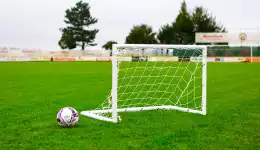
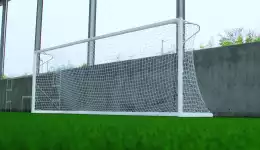
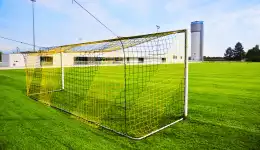
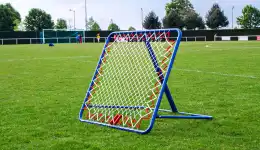



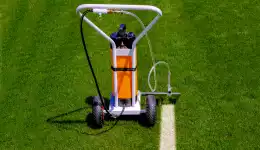


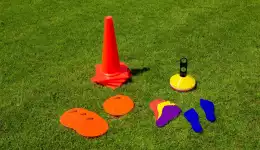




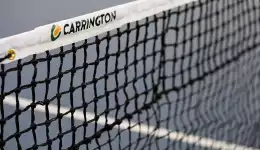
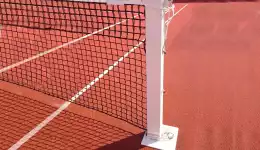


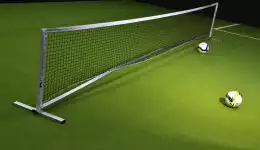

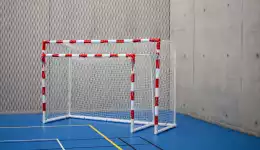


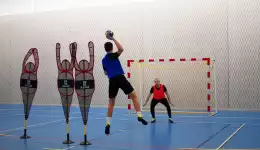





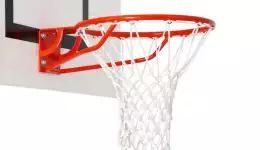

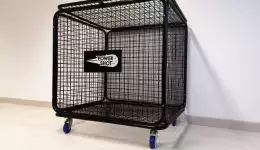
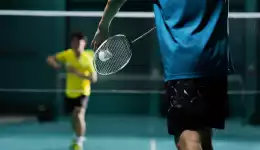

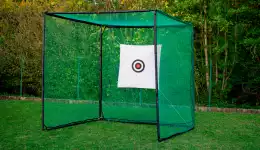
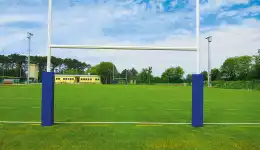
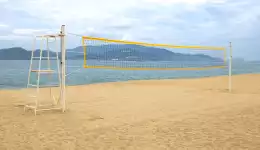
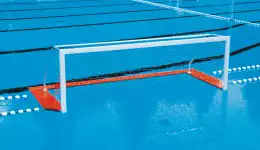







.jpg?width=400&height=300&crop-to-fit=1&quality=70&save-as=webp)

